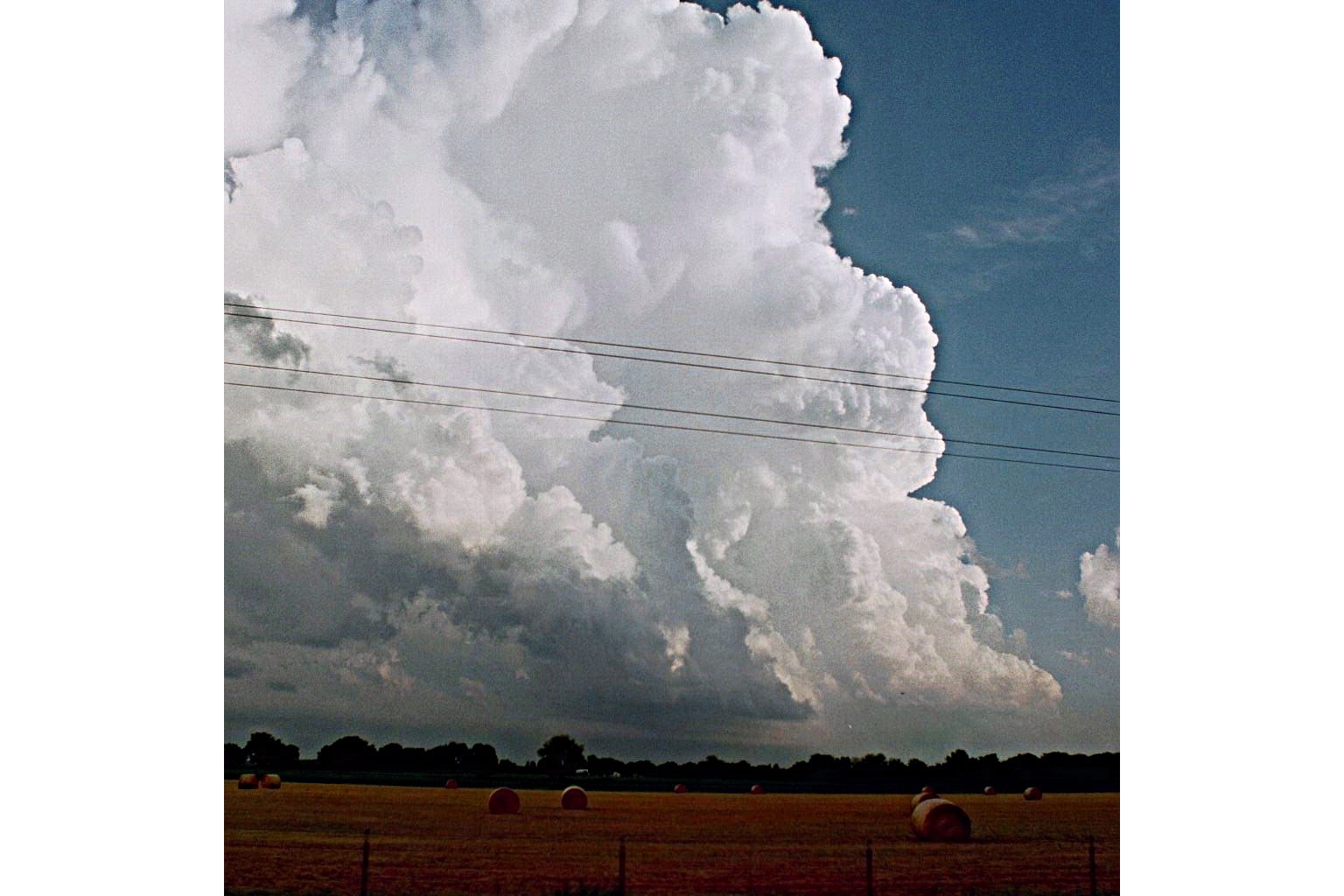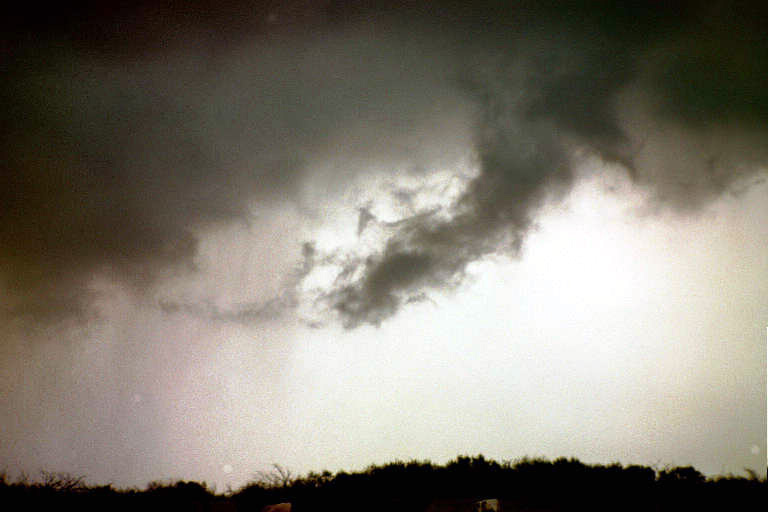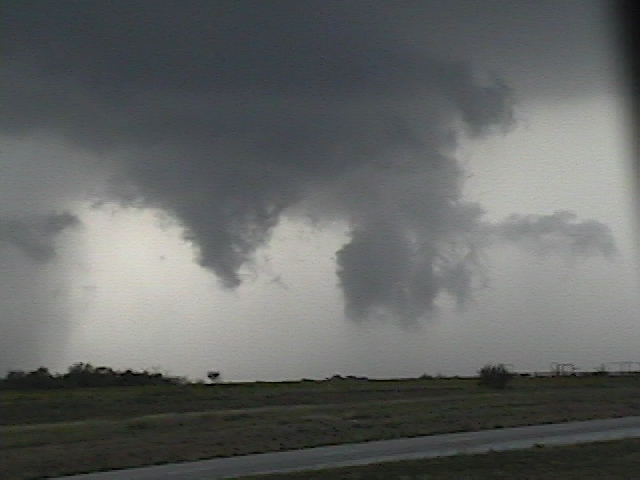|
|
|
|
Introduction |
||||
 Lenses The compact camera should have a zoom lens of high quality, like a Carl Zeiss or Schneider lens. Zoom lenses are always lower quality than fixed-size lenses, but by choosing a top brand the difference will not be much, and you will actually have a higher quality photo in the end than one taken with a fixed-size lens, because you can zoom in to to subject and take advantage of the film grain. If you would photograph the subject with a wide-angle lens, for example, you would need to enlarge the photograph afterwards anyhow to see anything, and the film granularity prevents enlargements of large size to be made. For the manual SLR camera at home, you will need a set of lenses, to be able to photograph all sorts of interesting clouds: 16mm fisheye or semi-fiseye, or equivalent adapter: This is useful for photographing extended clouds like a roll cloud at a thunderstorm, a thunderstorm itself at close distance, all-sky view with cloud streets, the whale's mouth effect, etc. It is more an option than mandatory, but a second hand fisheye adapter will not cost very much - up to about . 28mm wide-angle lens: This is the lens you will need most. Although it is a little too wide-angle for many clouds, an altocumulus deck, for example, will fit nicely in a 28 mm view. The 28mm lens is the lens which shows just not enough horizon curving (as with wider angle lenses) to spoil a photo. A curved horizon is not very beautiful to have on a photo! The 28 mm lens is the one I always have on my SLR camera at home when I don't use it. When some rare cloud appears, I can photograph it at once without first having to change lenses. 50 mm standard lens: This is for clouds with smaller extend, like a cumulus humilis covered sky, an area of mammatus clouds below a cloud deck, noctilucent clouds, etc. I use the 28 mm and 50 mm lenses most of the time. 135 mm telelens: Useful for photographing things like waterspouts, landspouts, distant tornadoes, pileus clouds, and also distant cumulus clouds. When buying any lens, closely inspect it for scratches, grime and any other inconsistencies. Sometimes a lens is fabricated and sold while there is an air bubble actually IN the lens glass! My father has had a similar experience, while buying an eyepiece for his telescope. So, always check a lens before buying. Also check if the lens is sharp enough for your needs at the edges of the view, especially with a wide angle or fish-eye lens. Also check if it actually fits your camera, and if you buy it, demand a proper lens cap if it hasn't any. General notes SOME OTHER CLOUD TYPES |
Camera
For cloud photography, almost any camera will do. I think best thing to do is to have a compact camera with you all the time, while a manual SLR camera with interchangeable lenses you keep at home. Then, if a rare or strange type of cloud occurs, you will always have the opportunity to take a photograph of it. I use a second-hand manual SLR camera at home, a Praktica, while I take a compact camera with 38-140 mm zoom lense with me all the time. The manual camera should have a bulb setting, to photograph cloud at night, and more important, noctilucent clouds (and perhaps nacreous clouds, if they appear long after sunset.  Film For film, use negatives or slides - accoring to your own taste. I think it is better to use negative film, rather than slide film, because it has not that high contrast (this is favorable for cloud photography, in which you want to see detail in light and dark areas ont he photo). Secondly, negative film is easier to process, and last but not least, it has a wider exposure range than slides. Especially with cloud photography you will get some exposure miscalculation by the camera's light sensor, because of bright sky or sunlight. In those cases, it is really helpful to have a somewhat more forgiving film than a slide film - which may only be over- or underexposed for 1 or 2 stops before the quality noticeable decreases.. Film brands I will leave to your own experience and judgement. I used to use Kodak Gold films all the time, due to the low cost. However, Fuji I also like very much, and the professional Kodak 160 ISO NC / VC film is also quite good. However, the latter has a different color mask and this yields red photos when using a film scanner - one needs to adjust the color gamma of each photo, then. I also tested Agfa 50 ISO and got good results. For film speed it is best to use 100 ISO (21 DIN). Films at lower ISO like 50 ISO or 64 ISO are better, but only for bright daylight photography, as these are quite slow, and sometimes you want to take photographs of clouds in twilight or even at night (noctilucent clouds), and then the long exposure times may be unacceptable, especially if you have no tripod with you. Best thing to do is to have two similar SLR cameras at home, one with a 50 ISO film and the other with a 200 ISO film, while the compact camera you take with you is loaded with 100 ISO film. For bright daylight photography, you use the 50 ISO, when at home, for photography at night you use the 200 ISO, and when away you have only the 100 ISO film. In short: a low ISO number is favorable for photo resolution, as a 50 ISO film has 3 to 4 times the resolution of a 200 ISO, but at the same time a short exposure time is favorable to prevent camera movement and cloud progress while taking the photo. The 100 ISO is probably the best way-in-between these two considerations, for cloud photography. 
SOME TYPES OF CLOUDS |
|||